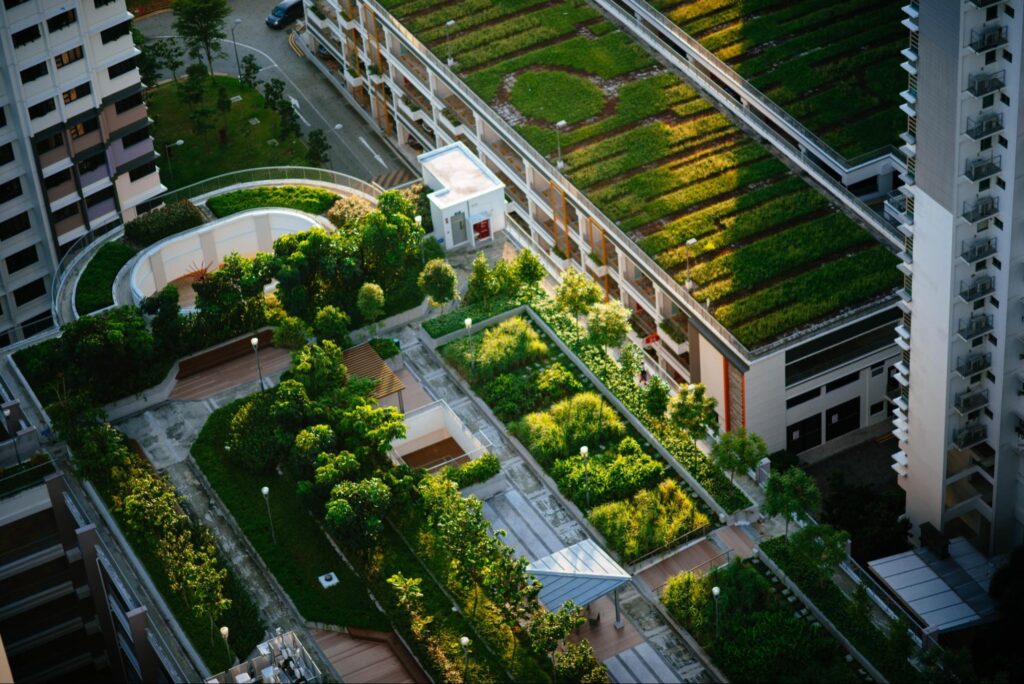
A city is an unsuspecting place to grow food, but now more than ever, people are turning to concrete jungles like Toronto to create food hubs.
Food insecurity has become more apparent in Toronto.
According to Food Banks Canada, some of the largest food banks they run in cities such as Toronto saw their usage double during the pandemic, while Ontario saw a 23 per cent increase.
While food is becoming less affordable for many, the opportunity to grow food and create more localized systems is growing rapidly.
This is due to the infrastructure that supports more community gardens and opportunities for green spaces.
Currently, Toronto has over 70 ongoing community gardens, where people can volunteer, grow food and donate to those who need it.
One of the most successful efforts to increase green spaces came from the Green Roof Bylaw.
This bylaw, adopted in 2009, requires any new building in Toronto with a floor area larger than 2,000 square metres to have green space on up to 60 per cent of the roof surface.
While the majority of these rooftops are not being used to grow food, there are clear examples of how this model could work on a greater scale.
The Ryerson Urban Farm, for instance, sits four storeys up on the corner of Church and Gould streets, amongst the traffic and noise of Toronto.
Walking by, it’s not obvious that a farm is in the vicinity, but above eye level is a quarter-acre plot that is packed with varieties of plants, herbs and vegetables in the warmer months.
On average, the small space grows up to 4,535 kilograms of food, herbs and Indigenous plant species a year.
With so many unused green roofs across the city, the potential to use the model of the Ryerson Urban Farm could create a significant amount of food through the summer months on a local level.
Localizing food systems is important for a variety of reasons.
Transportation needed to ship food creates excess carbon emissions and relying on imports exposes vulnerabilities in supply chains.
Cindy Pham, the engagement coordinator for the Ryerson Urban Farm says that growing food is an empowering experience for people and helps to increase the connection to where food comes from.
“The farm is a place for people to gather together around food and to connect with each other and to network with each other,” said Pham. “It’s definitely a space for people to have that and be able to grow with one another and learn with one another too.”
While she says urban farming is important, it does have its limitations.
“I don’t think that it’s the one thing that will solve food insecurity, because there’s so many other factors that come into play,” said Pham. “There needs to be access equitably for people to have true food security. But I think that it’s a stepping stone. It’s definitely a way to show people that it’s possible in cities to grow food and it’s possible that we don’t need to necessarily import everything that we have.”
While urban farming may not solve the problem of food insecurity on its own, many advocates around Toronto support more projects and expanded opportunities for spaces like these.
Ran Goel, the founder of Fresh City Farms is trying to bring awareness to the current issues in the food system and create new opportunities for improving localization through his business, an urban farm and grocery store chain.
“At its core, we’re trying to be an independent source of seasonal, sustainable and organic, fresh fruit,” Goel said. ”We’re really just trying to push the ball forward on creating an alternative food system if you will, for people to be able to have access to, I think, a better kind of food.”
Goel says urban farming comes with a host of environmental and social benefits, including the creation of new communities.
“That’s where in my mind, urban farming has the most potential. It’s really to bind very spirited and very passionate people together around food and advocate for change,” he said.
“Throughout the pandemic, the amount of Canadians taking up gardening skyrocketed.”
In October 2020, the Agri-Food Analytics Lab at Dalhousie University released a report on home gardening.
They found that one in five Canadians started to garden in 2020 and “two-thirds of them were significantly influenced by COVID-19.”
Fifty-one per cent of respondents grow at least one variety of fruit or vegetable.
This trend is growing and the opportunity to create more urban farms and farming communities comes from the ability to access land or rooftops.
Jamie Day Fleck, an urban farm advocate whose upcoming film, In My Backyard covers urban agriculture, says the city’s focus has been primarily on development and she wants to see that be leveraged to take advantage of opportunities like the Green Roof Bylaw to grow food.
“I think it’s this kind of thing that we need to start looking at in the city,” Fleck said. “How are the spaces used? Who benefits from these spaces? And how can we make it greener and more just for everyone?”
